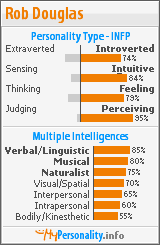Asset Based Community Development works on the following seven foundation beliefs, namely:
- Meaningful and lasting community change always originates from within, and local residents in that community are the best experts on how to activate that change.
- Building and nourishing relationships is at the core of building healthy and inclusive communities.
- Communities have never been built by dwelling on their deficiencies. The focus needs to be on the resources, capacities, strengths and aspirations of a community and its residents, instead of dwelling on the needs, deficiencies and problems.
- Every single person has capacities, abilities, gifts and ideas, and living a good life depends on whether those capacities can be used, abilities expressed, gifts given and ideas shared.
- The strength of a community is directly proportional to the level that the diversity of its residents desire, and are able to contribute their abilities and assets to the well being of their community.
- In every community something works. Change can be achieved best by identifying what works and focusing on doing more of what works.
- Creating positive change begins simply with conversation.
For instance, a church that has a top-down hierarchical style of management and leadership may set goals and directions for the organisation taking into the account the financial and organisational risks. It will most likely plan its outreach activities on the basis of felt and expressed needs within the community, or needs within the local church. The people who have decided on the goals will then undertake a process of convincing the rest of the group of the benefits of moving in that direction.
A church that uses ABCD will start by identifying and acknowledging the people who make up the church and through a collaborative process identify their assets including their spiritual gifts, their natural talents and expertise, and the wealth of experience and wisdom that they bring to the group. This process is called asset mapping.
When the assets of the group have been mapped it is then possible to begin to address ways of developing the combined assets and harnessing them for use in the Kingdom of God. This is a slower process than giving the job of planning to a strategic planning group, but it has the effect of stimulating excitement and vision from within the group and they do not feel that a goal has been imposed upon them. It also removes the sense of frustration that goes with setting goals that are outside the capabilities or interests of the group, or that are not practical at that particular time.
When a Christian organisation, specifically a church, undertakes this process it recognises the additional asset of the Holy Spirit so the process is not just driven around identifying the human assets, but is focussed very much on helping the group discover what God has done and is continuing do amongst them. This can then lead to a shared sense of agreement about the future direction of the church.

